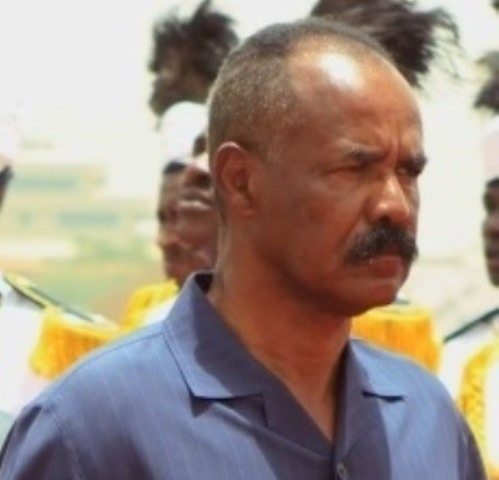[from: A Week in the Horn of Africa – Dec. 16, 2011 issue.]
The Durban Climate Conference was supposed to end on Friday evening last week. In fact, it was early Sunday morning before the host, South Africa, was able to announce agreement on a new roadmap for climate protocol negotiations, after what reports referred to as “hundreds of hours of bickering”. Delegates finally agreed to an EU-led plan to extend the Kyoto Protocol and start on negotiations on a new climate deal under which developed and developing countries will both work on an agreement that will be legally binding on all parties, to be finalized by 2015 and come into force after 2020. An Ad Hoc Working Group on the Durban Platform for Enhanced Action is now being set up to start on the process. The deal was hailed by the UN and many as a breakthrough. Secretary-General Ban ki-Moon told the Security Council on Tuesday that the conference had agreed on a clear target and timeline for reaching a legally binding deal and a recommitment to the Kyoto Protocol as well as significant advances on technology and financing, including the Green Climate Fund. He added that it was now necessary to implement these decisions and keep what he called the Durban spirit of cooperation and progress alive.
This may not be too easy and it is certainly clear it will be highly complicated to get a legal agreement acceptable to both developed and developing countries, let alone one that will for the first time include China and India as well as Europe and America. The form of words settled upon at Durban is “an agreed outcome with legal force”. EU lawyers say this means a legally binding commitment but it has already been suggested it is vague enough for countries to dispute later on. At the same time most of the detail has yet to be agreed and there will be no teeth in the agreement until 2020: “the real challenge will be in agreeing the fine print,” as an NGO director put it.
Time remains critical. The Intergovernmental Panel on Climate Change calculates that emissions must peak by 2020 at the latest and decline rapidly after that if any temperature rise is to have even a 50/50 chance of being kept below 2 degrees Celsius, the point at which it regards global warming as irreversible and catastrophic. This level will bring water stress in arid and semi-arid countries, more floods in low-lying coastal areas, coastal erosion in small island states, and the elimination of up to 30 percent of animal and plant species. The IPCC will produce its fifth assessment report in 2014 and most research suggests this is likely to show the situation is growing more serious.
The negotiations now will have to deal with such issues as the greater responsibility of the industrialized countries which have been producing emissions for far longer than others; the fact that some have tried harder to reduce emissions than others; different capabilities, and the question of taking large forest areas into account (forests absorb carbon). India, for example, made it clear it would insist on equity: that is to take into account capabilities of developing countries, populations that need to be lifted out of poverty, and the non-responsibility of the developing nations.
There is also the key question of funding. Developing countries have been promised $100 billion a year to 2020, to come from the rich nations and the private sector under the Green Climate Fund. This is to provide for the creation of a green economy and for adaptation and mitigation of the effects. The rich nations agreed at Copenhagen (2009) and Cancun (2010) that they would provide $30 billion 2010-2012, and $100 billion a year after that. So far, however, progress has been small although as Prime Minister Meles pointed out to the conference, the question of getting the Fund up and running is of paramount importance for Africans. For much of Africa, particularly for farmers, adaptation to climate change is a challenge for here and now.
The conference accepted a report recommending the Green Climate Fund to be established. It will be overseen by a body under the more independent UN Framework Convention for Climate Change (UNFCCC), as desired by developing countries, rather than the Global Environment Facility which the European Union and United States wanted. The Fund is to have 24 board members and a similar number of alternate members, representing developed and developing countries equally. Its assets will be managed by trustees, and the finance is to come from public and private sources. The conference, however, did not produce any concrete deal on the nature, the size or the sources of the Fund. At the end of the conference it was still not clear where and how the adaptation fund should be spent or on what projects. Nor is it clear how the developed countries will generate the funds in their own countries. Some NGOs have noted that there is actually no money on the table for action on climate change in Africa. There are only pledges and these are not legally binding. Some called the Green Climate Fund no more than an “empty shell" at the moment.
In fact, the UN High Level Advisory Group on Climate Finance, co-chaired by Prime Minister Meles and Prime Minister Stolenberg of Norway, has identified various possible sources including carbon pricing of international transportation, a financial transaction tax, carbon market flows and the auction of emission allowances. These could generate up to an estimated $60 billion a year by 2020, but more will be needed. Indeed, it remains unclear how far developed countries, struggling with economic recession, costly austerity measures and increasing budget deficits, will find these funds. African countries are already concerned that the “Green Fund” may not be made up of new contributions, but rather that money already allocated will be dispersed under a different label.
Equally, the links between the Green Climate Fund and the Adaptation Committee to oversee adaptation activities in developing countries, and the Technology Executive Committee to oversee technology development and transfer, have yet to be worked out. The conference did agree that a technology mechanism should be fully operational by 2012 to "promote and enhance the research, development, and deployment and diffusion of environmentally sound technologies for mitigation and adaptation in developing countries". The search is now on for a host for the Climate Technology Centre and Network to promote technology transfer between developed and developing countries. This is to “identify climate-friendly technologies; facilitate their deployment and adaptation to developing country needs; build national and regional technology management capacity; and support the research, development and demonstration of new climate-friendly technologies”.
There are other worries. The Adaptation Committee, as an advisory body, has now been made operational, but it will not be reporting to countries at the highest level in climate change talks which would have increased its effectiveness. There are fears this may affect the status and vital importance of adaptation. The mechanism for Reducing Emissions from Deforestation and forest Degradation (REDD+) provides incentives to developing countries to conserve and plant more forests but progress has been stalled by problems over financing, and the need to ensure that emission reductions achieved through forest conservation are measured and verified. A program was set up at Cancun to consider ways of addressing loss and damage associated with climate change in vulnerable countries. Its report delivered at Durban outlined the problems of trying to assess this, emphasizing the gaps in information. It has called for more research and for a study of the impact of slow moving climatic effects like droughts.
The concerns of the critics were given added point by the US Special Envoy for Climate Change, Todd Stern, who upset delegates by suggesting that far from preliminary talks starting immediately as the conference wanted, it would probably take a year or more of preparatory work before anything could realistically happen. On Monday this week Canada exercised its right to withdraw from the Kyoto Protocol, the first country to do so. According to its Environment Minister, Canada will save up $13.6 billion by its withdrawal, avoiding potential penalties associated with failing to meet emission targets under the Kyoto Protocol. The figure was disputed and the decision was greeted with dismay by the opposition in Canada as well as by the international community, with France, China, the UK and Japan all quick to condemn the move.
The executive secretary of the UN Framework Convention on Climate Change, Christiana Figueres, regretted the Canadian move but pointed out Canada still had a legal obligation under the Convention to reduce emissions as well as a moral obligation. She urged developed countries to meet their responsibilities under the UNFCCC, curb emissions and “provide the agreed adequate support to developing countries to build their own clean energy futures and adapt to climate change impacts they are already experiencing.”
****************
Check the Environment archive or Energy archive for previous and upcoming posts.






1 Comment on this post
Comments are closed.
Leave a Comment